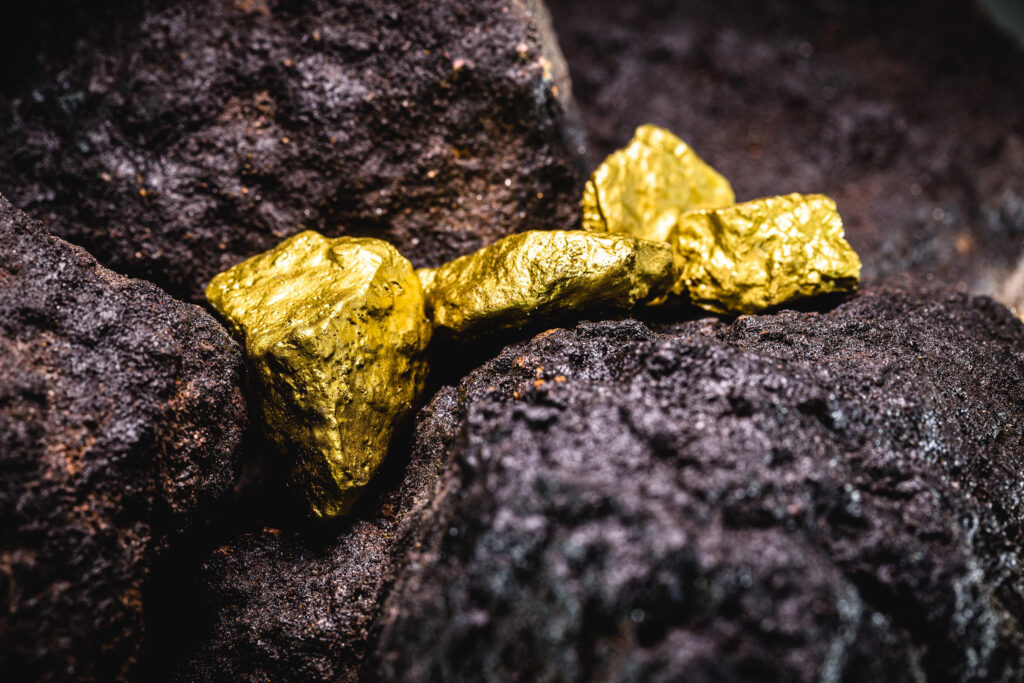Raw Gold Investment: A Comprehensive Guide

Investing in raw gold can be lucrative but requires careful consideration and knowledge. Here’s everything you need to know.
Understanding Raw Gold
What is Raw Gold?
Raw gold refers to gold in its natural form, typically extracted from mines or riverbeds. It has not undergone any processing or refinement.
Types of Raw Gold
Raw gold can come in various forms, including nuggets, dust, flakes, and grains. Each type has its own characteristics and value.
Advantages of Investing in Raw Gold
Investing in raw gold offers several benefits, such as:
- Portfolio diversification
- Hedge against inflation and economic uncertainty
- Tangible asset with intrinsic value
- Potential for high returns during times of market volatility
Risks Associated with Raw Gold Investment
However, raw gold investment also carries certain risks, including:
- Price volatility
- Market liquidity issues
- Storage and security concerns
- Potential for fraud and counterfeit products
Factors Influencing Raw Gold Prices
Supply and Demand Dynamics
The supply of raw gold is limited, with mining production and exploration activities influencing its availability. Meanwhile, demand for gold is driven by various factors, including jewelry, investment, and industrial uses.
Economic Factors
Economic indicators such as interest rates, inflation rates, and currency movements can impact raw gold prices. Gold is often seen as a safe-haven asset during times of economic instability.
Geopolitical Tensions
Geopolitical events, conflicts, and geopolitical tensions can create uncertainty in financial markets, leading investors to seek refuge in gold, thereby driving up prices.
Market Sentiment
Investor sentiment and market psychology also play a significant role in determining raw gold prices. Positive sentiment can lead to increased demand and higher prices, while negative sentiment may result in price declines.
Methods of Investing in Raw Gold
Physical Gold
Investors can purchase physical gold in the form of bars, coins, or bullion. Physical gold offers the advantage of direct ownership and tangible assets.
Gold Mining Stocks
Investing in gold mining stocks allows investors to gain exposure to the gold industry without directly owning physical gold. However, mining stocks are subject to company-specific risks and operational challenges.
Gold Exchange-Traded Funds (ETFs)
Gold ETFs are investment funds that track the price of gold and can be traded on stock exchanges like shares. They offer liquidity and diversification benefits to investors.
Gold Futures and Options
Futures and options contracts allow investors to speculate on the future price movements of gold without owning the underlying asset. These derivative products can be used for hedging or speculative purposes.
Strategies for Successful Raw Gold Investment
Diversification
Diversifying investment portfolios across different asset classes, including raw gold, can help reduce overall risk and enhance long-term returns.
Long-Term Perspective
Taking a long-term view when investing in raw gold can help investors ride out short-term fluctuations and capitalize on the metal’s intrinsic value over time.
Research and Analysis
Thorough research and analysis of market trends, economic indicators, and geopolitical events are essential for making informed investment decisions in raw gold.
Risk Management
Implementing risk management strategies such as setting stop-loss orders, diversifying investments, and staying updated on market developments can help mitigate potential losses.
Evaluating Raw Gold Investments
Conducting Due Diligence
Before investing in raw gold, investors should conduct thorough due diligence on potential sellers, dealers, and investment products to ensure authenticity and reliability.
Assessing Investment Goals
Investors should clearly define their investment goals, risk tolerance, and time horizon before allocating funds to raw gold investments.
Monitoring Market Trends
Staying informed about macroeconomic trends, geopolitical developments, and market sentiment is crucial for monitoring raw gold prices and making timely investment decisions.
Seeking Professional Advice
Consulting with financial advisors, precious metal experts, and investment professionals can provide valuable insights and guidance for navigating the complexities of raw gold investment.
Conclusion
Investing in raw gold offers potential rewards but also comes with risks. By understanding the market dynamics and adopting strategic approaches, investors can capitalize on opportunities while minimizing drawbacks.
FAQs
- Is raw gold a good investment option?
- Raw gold can be a viable investment option for diversifying portfolios and hedging against economic uncertainty. However, investors should carefully weigh the associated risks and conduct thorough research before investing.
- How can I mitigate risks associated with raw gold investment?
- Mitigating risks associated with raw gold investment involves diversifying portfolios, conducting due diligence, staying informed about market trends, and seeking professional advice.
- What are the tax implications of investing in raw gold?
- Tax implications of investing in raw gold vary depending on factors such as jurisdiction, investment vehicle, and holding period. Investors should consult with tax professionals for personalized advice.
- Should I invest in physical gold or gold stocks?
- The choice between investing in physical gold or gold stocks depends on individual preferences, risk tolerance, and investment objectives. Physical gold offers direct ownership and tangible assets, while gold stocks provide exposure to the gold industry without the need for storage.
- Where can I find reliable information about raw gold prices?
- Reliable information about raw gold prices can be obtained from reputable financial news sources, market data platforms, and precious metal dealers. Additionally, investors can track gold price movements using online charts and historical data.
Invest wisely and explore the promising world of raw gold investment.

